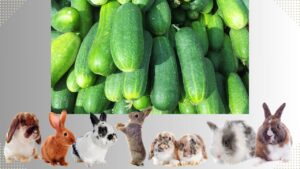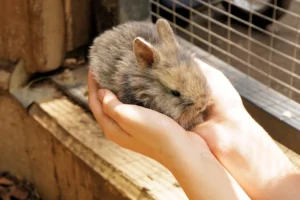Did you know that rabbits can enjoy the skin of a delicious mango? Not only is it a tasty treat, but mango skin also offers nutritional benefits for your furry friend.
Before you let your rabbit indulge, it’s important to understand the potential health benefits, risks, and how to properly prepare mango skin for their consumption.
In this article, we’ll explore everything you need to know about feeding mango skin to rabbits and ensuring their well-being.
In This Article
- 1 Key Takeaways
- 2 The Nutritional Value of Mango Skin for Rabbits
- 3 Potential Health Benefits of Mango Skin for Rabbits
- 4 Risks and Concerns of Feeding Mango Skin to Rabbits
- 5 How to Prepare Mango Skin for Rabbit Consumption
- 6 Introducing Mango Skin Into a Rabbit’s Diet: Tips and Guidelines
- 7 Alternatives to Mango Skin for Rabbit Treats
- 8 Signs of Allergic Reactions or Digestive Issues in Rabbits From Eating Mango Skin
- 9 Frequently Asked Questions
- 10 Conclusion
Key Takeaways
- Mango skin is a rich source of nutrients for rabbits, including high fiber content for digestion and a healthy gastrointestinal tract.
- Mango skin contains essential vitamins like vitamin A and C for bone, teeth, and fur development in rabbits.
- Mango skin has antioxidant properties that protect rabbits from free radicals.
- Feeding mango skin to rabbits can pose risks such as choking hazards, ingestion of pesticides or harmful substances, and gastrointestinal issues like diarrhea or bloating. It is recommended to avoid feeding mango skin to rabbits and opt for safe fruits and vegetables instead.
The Nutritional Value of Mango Skin for Rabbits
You should know that mango skin is a rich source of nutrients for rabbits. While mango skin isn’t commonly consumed by humans, it has been found to possess several health benefits for rabbits.
Research suggests that mango skin is high in fiber, which aids in digestion and promotes a healthy gastrointestinal tract. Additionally, it contains essential vitamins such as vitamin A and vitamin C, which are vital for the overall well-being of rabbits. These vitamins contribute to the growth and development of strong bones, teeth, and fur.
Moreover, mango skin has antioxidant properties that help protect rabbits from harmful free radicals. Some studies even propose that mango skin can be used in skincare products for humans due to its potential anti-inflammatory and moisturizing effects.
Potential Health Benefits of Mango Skin for Rabbits
Rabbits can benefit from the potential health benefits of mango skin by providing them with essential nutrients and promoting their overall well-being. However, it is important to consider the potential risks of feeding mango skin to rabbits. While mango skin contains valuable nutrients such as fiber, vitamins, and antioxidants, it also poses a choking hazard and may contain pesticides or other harmful substances if not properly washed. Therefore, it is recommended to remove the skin before feeding mango to your rabbit.
When it comes to safe fruits and vegetables for rabbit consumption, it is crucial to provide a balanced diet that includes a variety of fresh produce. Some safe options include leafy greens like kale, cilantro, and parsley; vegetables such as carrots, bell peppers, and cucumbers; and fruits like apples, strawberries, and blueberries. It is important to introduce new foods gradually and monitor your rabbit’s response to ensure they tolerate them well. Remember to always consult with a veterinarian to ensure your rabbit’s dietary needs are being met and to address any specific concerns or questions.
| Safe Fruits | Safe Vegetables |
|---|---|
| Apples | Kale |
| Strawberries | Carrots |
| Blueberries | Bell peppers |
| Cucumbers | |
| Parsley |
Risks and Concerns of Feeding Mango Skin to Rabbits
Can mango skin pose any risks or concerns when fed to rabbits, and should it be avoided for their safety and well-being?
The health risks associated with feeding mango skin to rabbits are a topic of concern among rabbit owners. While mango flesh is generally safe for rabbits and can provide some nutritional benefits, the skin is a different story. Research suggests that the skin of mangoes contains higher levels of pesticides and can be difficult for rabbits to digest.
Ingesting large amounts of mango skin may lead to gastrointestinal issues such as diarrhea or bloating. Therefore, it’s recommended to avoid feeding mango skin to rabbits. If you still wish to offer mango as a treat, ensure proper portioning and only feed the flesh without the skin to minimize any potential health risks.
How to Prepare Mango Skin for Rabbit Consumption
To safely prepare mango skin for your rabbit’s consumption, start by thoroughly washing and peeling the skin before cutting it into small, digestible pieces. Mango skin can be a healthy addition to a rabbit’s diet when prepared correctly. It’s important to remove any pesticides or dirt from the skin by washing it under running water.
Peeling the skin ensures that your rabbit won’t have any trouble digesting it. After peeling, cut the skin into small, manageable pieces to make it easier for your rabbit to eat. Remember to introduce mango skin gradually into your rabbit’s diet to avoid any digestive issues.
While mango skin can be a tasty treat for rabbits, it should be fed in moderation, alongside a balanced diet of hay, fresh vegetables, and pellets. Always consult with a veterinarian to ensure that mango skin is suitable for your rabbit’s individual dietary needs.
Introducing Mango Skin Into a Rabbit’s Diet: Tips and Guidelines
When introducing mango skin into your rabbit’s diet, it’s important to follow these tips and guidelines for a smooth transition. Rabbits can eat mango skin in moderation, but it should be introduced gradually to prevent any digestive upset. Mango skin is rich in fiber, vitamins, and antioxidants, making it a nutritious addition to your rabbit’s diet. However, some rabbits may be allergic to mango skin, so it’s essential to monitor your rabbit for any signs of allergies, such as itching, sneezing, or gastrointestinal issues. Additionally, always wash the mango thoroughly to remove any pesticides or chemicals before offering it to your rabbit.
Alternatives to Mango Skin for Rabbit Treats
You should consider offering your rabbit alternative treats instead of mango skin. While mango skin can be a tasty treat for humans, it isn’t recommended for rabbits. Mango skin is difficult for rabbits to digest and can lead to digestive issues such as diarrhea or blockages.
It’s best to provide your rabbit with safe and healthy treats that are specifically formulated for them. There are several mango skin substitutes that you can consider for your rabbit’s treats. Homemade rabbit treats can be a great option. You can make treats using ingredients such as carrots, apples, and leafy greens. These treats aren’t only safe for rabbits but also provide them with essential nutrients.
Always consult with a veterinarian to ensure that any treats you offer your rabbit are safe and appropriate for their dietary needs.
Signs of Allergic Reactions or Digestive Issues in Rabbits From Eating Mango Skin
If your rabbit is experiencing signs of allergic reactions or digestive issues from eating mango skin, it’s important to consult a veterinarian for proper guidance. Allergic reactions and digestive issues can be serious health concerns for rabbits and shouldn’t be taken lightly.
When it comes to feeding your rabbit mango skin, there are a few things to keep in mind:
- Mango skin contains a compound called urushiol, which can cause allergic reactions in some rabbits.
- Digestive issues, such as diarrhea or stomach upset, can occur if your rabbit consumes too much mango skin.
- It’s best to remove the skin from the mango before feeding it to your rabbit to avoid any potential issues.
- Always introduce new foods slowly and in small quantities to monitor your rabbit’s reaction.
- If your rabbit shows any signs of allergic reactions or digestive issues, stop feeding mango skin immediately and seek veterinary advice.
Frequently Asked Questions
Can Rabbits Eat Mango Seeds?
Yes, rabbits can eat mango seeds, but it’s important to note that they should only be given in small amounts as a treat. Mango seeds are high in fiber and can provide some nutritional benefits, but they also contain cyanide compounds which can be harmful in large quantities.
How Often Can Rabbits Eat Mango Skin?
You may be wondering about the frequency of feeding mango skin to your furry friend. Mango skin can provide some nutritional benefits to rabbits, but it also carries potential risks. Let’s explore this further.
Can Rabbits Eat Other Fruit Skins?
Rabbits can eat some fruit skins, like apple or pear, but not all are safe. Mango skins, for example, should be avoided as they can cause digestive issues. It’s important to provide a balanced diet for your rabbit, with alternative treats like hay and fresh vegetables.
Are There Any Specific Breeds of Rabbits That Should Not Eat Mango Skin?
Specific breeds of rabbits with allergies or sensitivities may need to avoid eating mango skin. It is important to research your rabbit’s breed and consult with a veterinarian to determine if mango skin is safe for them to consume.
Is There a Recommended Age for Rabbits to Start Eating Mango Skin?
You should be cautious about feeding mango skin to your rabbit, as it may pose potential risks. It’s important to consider the recommended age for rabbits to start eating mango skin to ensure their well-being.
Conclusion
In conclusion, while mango skin may provide some nutritional benefits for rabbits, it’s important to exercise caution when feeding it to them. The potential risks and concerns, such as digestive issues and allergic reactions, should be taken into consideration.
If you choose to introduce mango skin into your rabbit’s diet, ensure that it’s prepared properly and in moderation. Remember, there are also alternative treats available that can provide similar benefits without the potential risks.





